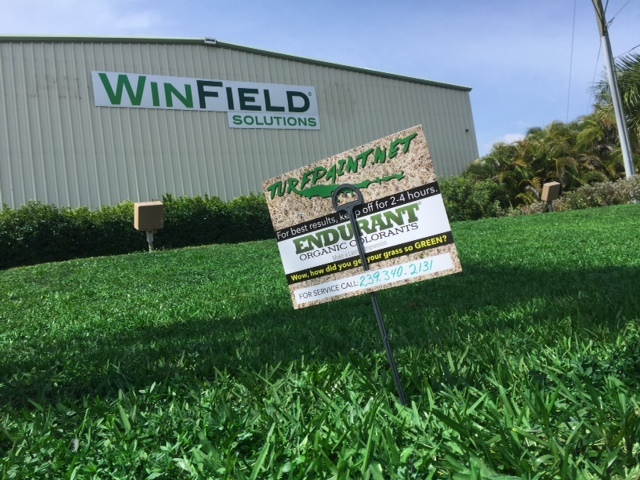Turfgrass Colorants, Part I: Paints vs. Pigments with Justin White
Geoponics and turfgrass expert Justin White sat down for an interview to talk turf and specifically
turfgrass colorants. White shares tips on
turf pigments versus turfgrass paints used on cool season or warm season grasses in various growing conditions.

White, currently of
WinField Solutions, has nearly 20 years prior experience as a golf course superintendent.
This is the first in a three-part interview with White, who goes into more details about specific turfgrass species and suggestions for colorant usage in the
next article, "Turfgrass Colorants, Part II: How golf courses transition from pigment to paint." Keep an eye on the
Turf Paint blog for
Part II and
Part III. Part III will include 8 tips on using colorants.
Tips for golf course superintendents using turf colorants, paint and pigments
Geoponics: Every area of the U.S. is different. Every area has different challenges. You, currently being in the San Antonio, TX area, certainly you have different conditions than in Seattle or NY. That being said, there are many things that are similar in nature. Can you share more about your experiences in various growing conditions throughout the U.S.?
White: Most of my experience is with golf courses. I was a superintendent for 18 years before working with WinField. My experiences working in turfgrass management, and golf courses specifically, were in Dallas as well as Nevada and Nebraska working with cool season grasses. I was born and raised in Texas where water is a big issue throughout the state.
Geoponics: How do you see turf colorants as a benefit to add to the toolbox of the superintendent?
White: More and more folks are getting away from overseeding. There are multiple reasons for this, including operational costs, resources-- and water being a resource and the very main one. There is also a perception of the way water is used.
Superintendents have gotten away from the overseed, managing revenue and providing an aesthetic that members would like to see during the dormancy period by using colorants.
Geoponics: Which colorants do you recommend?
White: It started with the Endurant pigment catching on first. Guys started using Endurant TE pigments in the fall and tried to rely on them for some color in the winter. Once the chlorophyl is lacking, pigments take on a less than desirable appearance and that's where the other Endurant colorants, the Endurant paints come in. This way, the superintendents can continue to provide that aesthetic they want and the contrasting color versus the bermudagrass by using the Endurant paint colorants. In Texas, you can have 100 percent dormancy, or a time when you don't have any vertical growth.
Click here for Part II with Justin White, where you will learn:
- How to begin using turf paints
- Transitioning from pigments to paints
- Colorants used on various turfgrass species
- Four suggestions for golf course superintendents prior to painting
Check out Part III with Justin White where he offers 8 tips on using colorants. Part III covers:
- Colorants used on various species of turfgrass, including tips on when to use pigments and when to use paints.
- Features and effects of using colorants on both cool season and warm season grass varieties.
- Water conservation, turfgrass dormancy and varying turfgrass conditions across climates.
 White, currently of WinField Solutions, has nearly 20 years prior experience as a golf course superintendent.
This is the first in a three-part interview with White, who goes into more details about specific turfgrass species and suggestions for colorant usage in the next article, "Turfgrass Colorants, Part II: How golf courses transition from pigment to paint." Keep an eye on the Turf Paint blog for Part II and Part III. Part III will include 8 tips on using colorants.
White, currently of WinField Solutions, has nearly 20 years prior experience as a golf course superintendent.
This is the first in a three-part interview with White, who goes into more details about specific turfgrass species and suggestions for colorant usage in the next article, "Turfgrass Colorants, Part II: How golf courses transition from pigment to paint." Keep an eye on the Turf Paint blog for Part II and Part III. Part III will include 8 tips on using colorants.